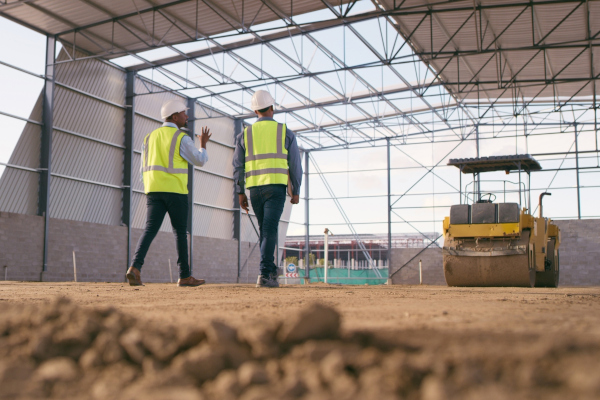Research recently issued by Dallas-based industrial real estate firm CBRE showed mixed readings on various fronts for the third quarter.
In its “U.S. Industrial Q3 2023” report, CBRE found that third-quarter construction starts saw a 37% decline quarter-over-quarter and a 64% annual decline, to 40 million square-feet (MSF), which CBRE said lowered the under-construction total for the third consecutive quarter, to 479 MSF.
James Breeze, CBRE vice president, global head of industrial & logistics research, told Logistics Management that there are three main drivers for lower construction starts.
“One is difficulties in the financial markets, particularly the cost of capital due to higher interest rates,” he said. “Second is general economic uncertainty and how this affects consumer and thus occupier demand. Third is the record-breaking amount of construction completions, which have increased vacancy rates in the 300,000 sq. ft. and above size segment. There is some concern that there is currently too much supply available in certain markets and it needs some time to absorb.”
Third-quarter leasing activity fell 12.4% annually, coming in at 590.6 MSF, with CBRE noting that renewals comprised more than one-third of total activity.
Despite the annual decline, Breeze observed that it is not a major concern, explaining that at the end of 2022, CBRE projected 2023 would be the third-strongest year for leasing activity, with that expected to come to fruition.
“It just so happens that the two biggest years on record for leasing were 2021 and 2022,” he said. “We are still seeing solid levels of activity, just not at the record breaking and unsustainable levels of the previous 24 months, where occupiers were leasing record amounts of space as a direct result of the decline in domestic inventories and the need to expand those inventories.”
Net absorption fell to 55.8 MSF in the third quarter, according to CBRE, bringing the year-to-date total to 200.7 MSF, below the 380.8 MSF recorded a year ago through the first three quarters of 2022.
Regarding the net absorption decline, Breeze said that net absorption, just like most industrial real estate demand metrics, is going through a normalization as the rush to lease space post-COVID begins to slow.
“That being said, we do also see some occupiers delaying leasing new space until there is more certainty in the overall economy,” he said. “If we get more stability in the economy in the coming quarters, we will see a pickup in new lease activity, which will improve net absorption.”
Average third quarter asking rent increased 2.0%, from the second quarter to the third quarter, and was up 9.1% annually, coming in at a record $10.16 per square foot, with average taking rent up 1.6% from the second quarter to the third quarter and up 15.4% annually. And the third quarter vacancy rent, at 4.2%, represented its highest level since the first quarter of 2021.
When asked if the pairing of rising vacancy rates and average asking rents is sustainable, or a byproduct of current market trends, Breeze said that vacancy rates are rising because of record amounts of new construction, with most of this new construction is in product over 300,000 square feet.
“When looking at product under 300,000 square feet, the vacancy rates have remained near record lows and demand is still solid,” he said. “This will lead to continued rent growth in this size range, which will keep the overall rent growth number ascending in 2024. We expect rents over 300,000 square feet to stabilize, but there will be minimal rent depreciation. We don’t expect much depreciation because of the drop in construction starts which will create a significant drop in new supply in the second half of 2024.
SC
MR


Latest Supply Chain News
Latest Podcast

 Explore
Explore
Business Management News
- Challenges to ESG reporting
- With capacity to spare, logistics real estate demand remains subdued
- How to improve demand forecasts for new product families
- Services sector sees growth in October, reports ISM
- Balanced supply chain management Part 4: The key—leading beyond the silo
- Managing inbound freight: What has changed in two decades?
- More Business Management
Latest Business Management Resources

Subscribe

Supply Chain Management Review delivers the best industry content.

Editors’ Picks




